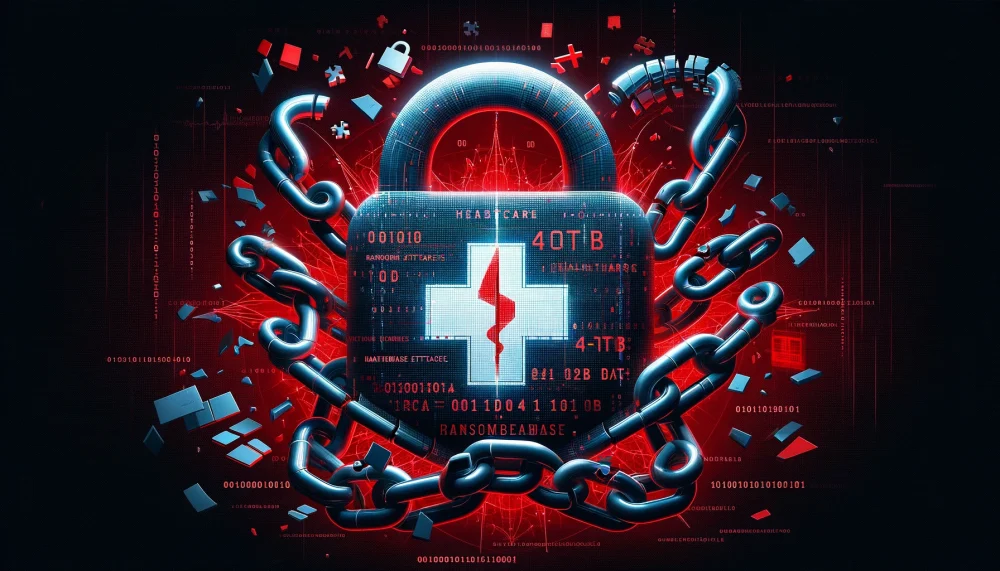
Kitchen-Sink Attack Chains: The Primary Cyber Threat to 2024 Elections
As the 2024 elections approach, cybersecurity experts warn that the most significant threat to the democratic process will likely be a combination of various cyberattacks, rather than a single, isolated incident. These “kitchen-sink” attack chains, as they are called, involve hackers using multiple tactics in tandem to achieve their malicious goals, making them more difficult to detect and defend against. According to a recent report by Mandiant, part of Google Cloud, the most potent threats to elections are chained attacks, where threat actors deliberately layer multiple tactics in hybrid operations to magnify the effect of each component. This approach has been used in past elections, such as the 2014 Ukrainian presidential elections, where Russian actors launched DDoS attacks, deleted files from the country’s central election computers, leaked emails and documents, and attempted to present fake results favoring a specific candidate. In the 2020 US elections, two Iranian nationals carried out a campaign against multiple states’ voting-related websites, obtaining confidential voter information, sending intimidating and misleading emails, and spreading disinformation about election infrastructure vulnerabilities. They also breached a media company, which could have provided another channel for disseminating false claims. Apart from state-sponsored actors, insiders, hacktivists, and cybercriminals also pose a threat to the democratic process. Fake social media accounts and websites affiliated with presidential candidates can be used to spread scams, malware, steal funds, or influence voters’ views by distributing fake news. These impersonations can also be used to interact with real people from campaigns and infiltrate their systems. As the digital battlefield becomes increasingly accessible, it is crucial for election officials, campaigns, and voters to remain vigilant and proactive in safeguarding the integrity of the democratic process against these evolving cyber threats.Fortify Security, Trust SSL.com Certificates.

State-Sponsored Hackers Breach MITRE R&D Network via Ivanti Zero-Day Vulnerabilities
MITRE, a federally funded not-for-profit company, recently disclosed a breach of its Networked Experimentation, Research, and Virtualization Environment (NERVE) by a foreign state-sponsored threat actor in early January. The attackers exploited two zero-day vulnerabilities, CVE-2023-46805 and CVE-2024-21887, in Ivanti Connect Secure VPN devices to gain initial access. These vulnerabilities were first reported by Volexity on January 10, attributing their exploitation to Chinese government-backed hackers. After gaining access, the attackers conducted reconnaissance, bypassed multi-factor authentication using session hijacking, and moved laterally within MITRE’s network. They employed sophisticated backdoors and webshells to maintain persistence and harvest credentials, targeting the organization’s VMware infrastructure using a compromised administrator account. While MITRE has not provided attribution details beyond identifying the attackers as a foreign nation-state threat actor, Google Cloud’s Mandiant is aware of several China-linked threat actors exploiting the Ivanti VPN vulnerabilities in their attacks. MITRE’s ongoing investigation has found no evidence of impact on its core enterprise network or partners’ systems. The organization has shared information on the observed ATT&CK techniques, best practices for detecting such attacks, and recommendations for hardening networks. The same Ivanti vulnerabilities were also used to hack into systems belonging to the U.S. Cybersecurity and Infrastructure Security Agency (CISA), potentially affecting 100,000 individuals. MITRE, widely known for its ATT&CK knowledge base of adversary tactics and techniques, recently opened a new AI Assurance and Discovery Lab to discover and manage risks in AI-enabled systems.Explore how SSL.com can enhance your IoT security.

CoralRaider Threat Actor Launches Global Attack Campaign with Multiple Info Stealers
Cisco’s Talos security research unit has uncovered a widespread attack campaign by a threat actor known as CoralRaider, which employs a combination of information stealers to harvest credentials and financial data from users worldwide. The threat actor, believed to be of Vietnamese origin, has been targeting individuals across various business verticals and geographies since at least 2023. CoralRaider’s attack campaign has evolved over time, with the threat actor previously using a customized QuasarRAT variant called RotBot and the XClient stealer to target financial and login information and steal social media accounts. Since February 2024, the threat actor has expanded its arsenal to include three information stealers: Cryptbot, LummaC2, and Rhadamanthys. The attacks have targeted users in Ecuador, Egypt, Germany, Japan, Nigeria, Norway, Pakistan, the Philippines, Poland, Syria, Turkey, the UK, and the US, with some victims identified as employees of computer service call center organizations in Japan and civil defense service organizations in Syria. CoralRaider has been using phishing emails containing malicious links to deliver ZIP archives with crafted shortcut files, triggering a multi-stage infection chain that ultimately executes the information stealers on the targeted systems. CryptBot, LummaC2, and Rhadamanthys are well-known information stealers with various capabilities, including harvesting credentials from browsers, stealing sensitive files, and exfiltrating data from cryptocurrency wallets and other applications. The use of these stealers in combination allows CoralRaider to maximize the impact of its attacks and gather a wide range of valuable information from its victims. As CoralRaider continues to evolve and expand its global reach, organizations and individuals must remain vigilant and adopt robust cybersecurity measures to protect against these increasingly sophisticated threats. Regularly updating software, using strong and unique passwords, enabling multi-factor authentication, and educating users about the dangers of phishing emails are essential steps in mitigating the risk of falling victim to such attacks.Secure Email, Trust SSL.com S/MIME.

Change Healthcare Suffers Second Ransomware Attack by RansomHub
Change Healthcare, a subsidiary of United Healthcare, has reportedly suffered another ransomware attack, this time by the RansomHub gang, just weeks after being targeted by ALPHV/BlackCat. RansomHub claims to have stolen 4TB of sensitive data, including information about US military personnel, patients, medical records, and financial information. The gang is demanding an extortion payment and threatens to sell the data to the highest bidder if the ransom is not paid within 12 days. This second attack comes at a challenging time for Change Healthcare, which has only recently recovered from the previous ALPHV/BlackCat cyberattack. The company now faces a difficult decision regarding whether or not to pay the ransom to protect its clients’ sensitive information. Malachi Walker, a security adviser at DomainTools, suggests that even if RansomHub is not directly connected to ALPHV/BlackCat, the group could be claiming ties to their victims to intimidate them into making a payment. He also highlights the thriving underground economy surrounding the ransomware scene, with various actors collaborating to share information. While there is speculation about a possible connection between ALPHV/BlackCat and RansomHub, or if ALPHV has rebranded as RansomHub, Walker states that it is too early to confirm any direct link between the two groups. This incident underscores the ongoing threat posed by ransomware gangs and the importance of robust cybersecurity measures to protect sensitive data in the healthcare industry. As Change Healthcare navigates this second ransomware attack, it faces a challenging situation in ensuring the safety of its clients’ information.SSL.com Announcements
SSL.com’s S/MIME Certificates can now be integrated with an LDAP-enabled network
LDAP (Lightweight Directory Access Protocol) is an industry-standard protocol for accessing and managing directory information services. It is commonly used for storing and retrieving information about users, groups, organizational structures, and other resources in a network environment.
Integrating LDAP with S/MIME certificates involves utilizing LDAP as a directory service to store and manage user certificates.
By integrating LDAP with S/MIME certificates, organizations can centralize certificate management, enhance security, and streamline the process of certificate retrieval and authentication in various applications and services that leverage LDAP as a directory service.
Contact sales@ssl.com for more information on LDAP integration.


